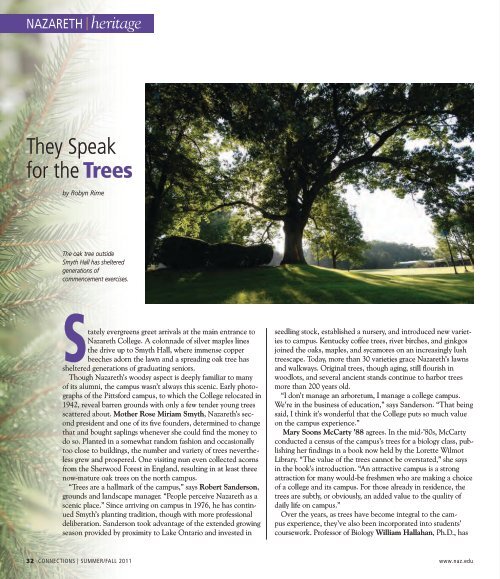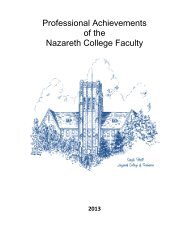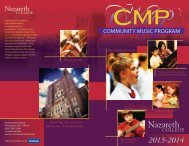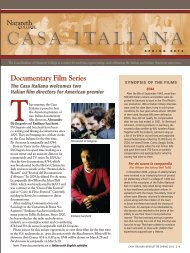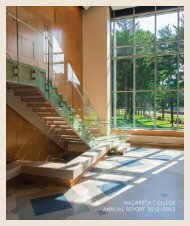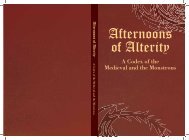SummEr/FAll 2011 - Nazareth College
SummEr/FAll 2011 - Nazareth College
SummEr/FAll 2011 - Nazareth College
Create successful ePaper yourself
Turn your PDF publications into a flip-book with our unique Google optimized e-Paper software.
<strong>Nazareth</strong> | heritage<br />
They Speak<br />
for the Trees<br />
by Robyn Rime<br />
The oak tree outside<br />
Smyth Hall has sheltered<br />
generations of<br />
commencement exercises.<br />
Stately evergreens greet arrivals at the main entrance to<br />
<strong>Nazareth</strong> <strong>College</strong>. A colonnade of silver maples lines<br />
the drive up to Smyth Hall, where immense copper<br />
beeches adorn the lawn and a spreading oak tree has<br />
sheltered generations of graduating seniors.<br />
Though <strong>Nazareth</strong>’s woodsy aspect is deeply familiar to many<br />
of its alumni, the campus wasn’t always this scenic. Early photographs<br />
of the Pittsford campus, to which the <strong>College</strong> relocated in<br />
1942, reveal barren grounds with only a few tender young trees<br />
scattered about. Mother Rose Miriam Smyth, <strong>Nazareth</strong>’s second<br />
president and one of its five founders, determined to change<br />
that and bought saplings whenever she could find the money to<br />
do so. Planted in a somewhat random fashion and occasionally<br />
too close to buildings, the number and variety of trees nevertheless<br />
grew and prospered. One visiting nun even collected acorns<br />
from the Sherwood Forest in England, resulting in at least three<br />
now-mature oak trees on the north campus.<br />
“Trees are a hallmark of the campus,” says Robert Sanderson,<br />
grounds and landscape manager. “People perceive <strong>Nazareth</strong> as a<br />
scenic place.” Since arriving on campus in 1976, he has continued<br />
Smyth’s planting tradition, though with more professional<br />
deliberation. Sanderson took advantage of the extended growing<br />
season provided by proximity to Lake Ontario and invested in<br />
seedling stock, established a nursery, and introduced new varieties<br />
to campus. Kentucky coffee trees, river birches, and ginkgos<br />
joined the oaks, maples, and sycamores on an increasingly lush<br />
treescape. Today, more than 30 varieties grace <strong>Nazareth</strong>’s lawns<br />
and walkways. Original trees, though aging, still flourish in<br />
woodlots, and several ancient stands continue to harbor trees<br />
more than 200 years old.<br />
“I don’t manage an arboretum, I manage a college campus.<br />
We’re in the business of education,” says Sanderson. “That being<br />
said, I think it’s wonderful that the <strong>College</strong> puts so much value<br />
on the campus experience.”<br />
Mary Soons McCarty ’88 agrees. In the mid-’80s, McCarty<br />
conducted a census of the campus’s trees for a biology class, publishing<br />
her findings in a book now held by the Lorette Wilmot<br />
Library. “The value of the trees cannot be overstated,” she says<br />
in the book’s introduction. “An attractive campus is a strong<br />
attraction for many would-be freshmen who are making a choice<br />
of a college and its campus. For those already in residence, the<br />
trees are subtly, or obviously, an added value to the quality of<br />
daily life on campus.”<br />
Over the years, as trees have become integral to the campus<br />
experience, they’ve also been incorporated into students’<br />
coursework. Professor of Biology William Hallahan, Ph.D., has<br />
32 CONNECTIONS | Summer/Fall <strong>2011</strong> www.naz.edu


